Fog Moss Summer
Homeostasis of moist
It’s summertime! My social media feeds are full of bikinis and sunglasses, frosty cocktails and big tanned grins. And I am... cold. Somehow I now inhabit more cold foggy locations than ever. And while, my skin has never looked better, I am considering a SAD lamp for reverse seasonal depression.
One note before I continue, since I’ve gotten more subscribers (hello!!). Some of these Hot Moss newsletters will be scientifically motivated, some (next week for example) will be pop culture, and some will be travel/ hiking blogs. All of them will be mossy. While I hope it’s become clear by now that I’m not a bryologist (aka moss-y scientist), I am an observational ecologist. I’ve been having a nerdy blast learning more and more about forest ecology, and I’m so excited to keep sharing it.
Today’s post is a travel one. It’s about a place called Kodiak that is really special. It’s also about learning to love fog and rain no matter the season. If for no other reason than they are giving such life to moss. And nothing helps beat blues like seeing your friends thrive, right? If you want to learn more how moss keeps its forests thriving, no matter the season, read on.
This is Alaskan moss goss part 2
To read part 1, click here:
Ok, logistics out of the way. Now it’s time to talk more about the magical moss on the MAGICAL Kodiak Island in southern Alaska. Absolutely thriving in its foggy moss summer.
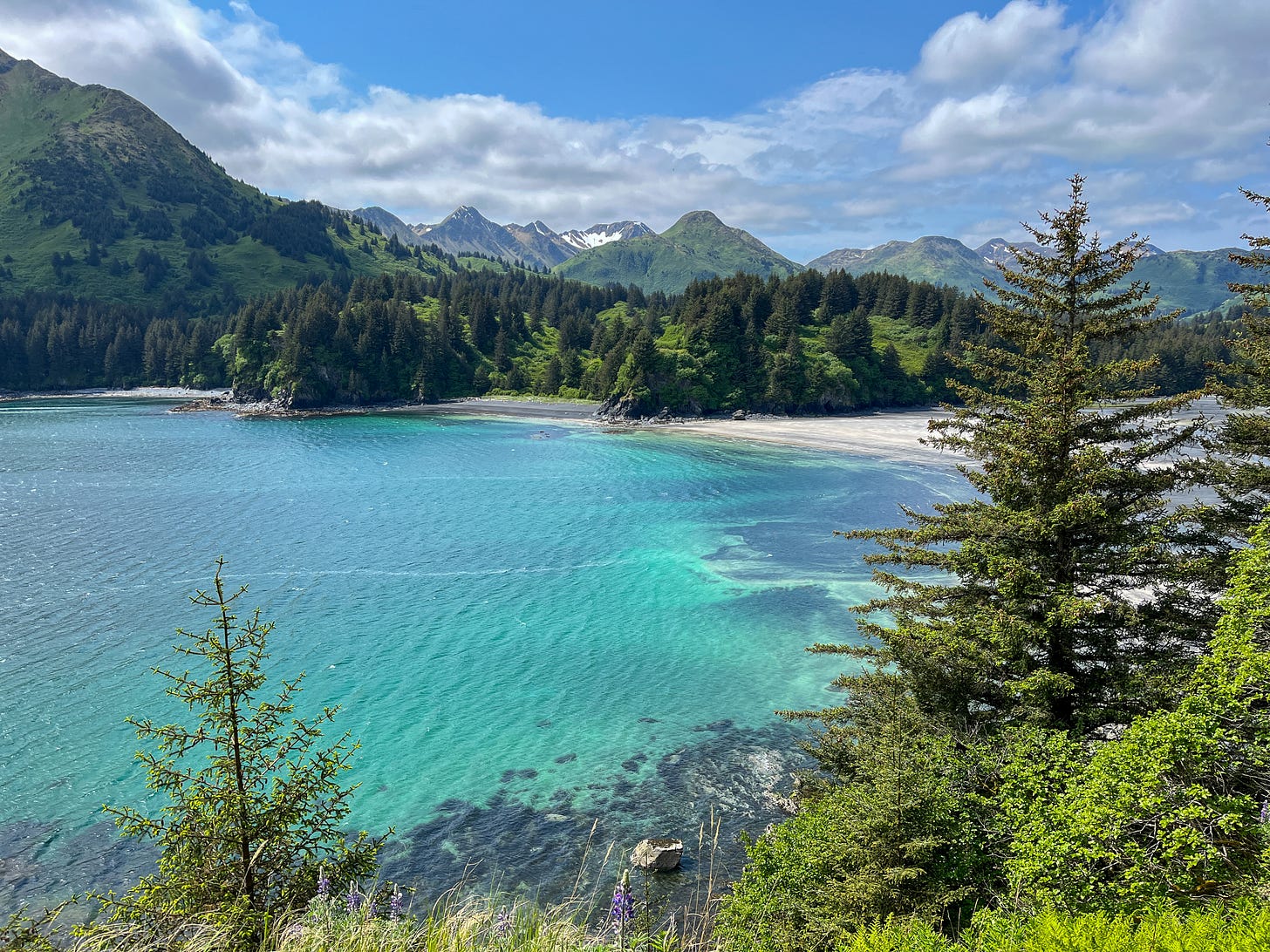
Normally when you see moss, it’s a side character. It’s a supporting role in the urban ecosystem of a big city. It’s having a playful moment in the cracks of a brick wall. It’s annoying you on your full grass lawn (more on that in a future issue). But this issue and another issue coming later this “summer” will have the absolute biggest fanciest moss of my life so far. Moss this big is maintaining and even changing the forest. That’s right, MAIN CHARACTER ENERGY MOSS.
I was lucky enough to take a short reporting trip on kelp to Kodiak Island, just south of the mainland part of Alaska. So green it’s sometimes called the Emerald Isle, it’s the second biggest island in the US, next to the Big Island of Hawaii. But unlike Hawaii, Kodiak is only home to about 12,000 people, and a lot of the island is not accessible by car or roads at all. The island is almost entirely run on renewable energy (wind and turbines, like a surprising amount of Alaska is actually). There is a burgeoning kelp farming industry there, and I will hopefully be able to write more about that asap.
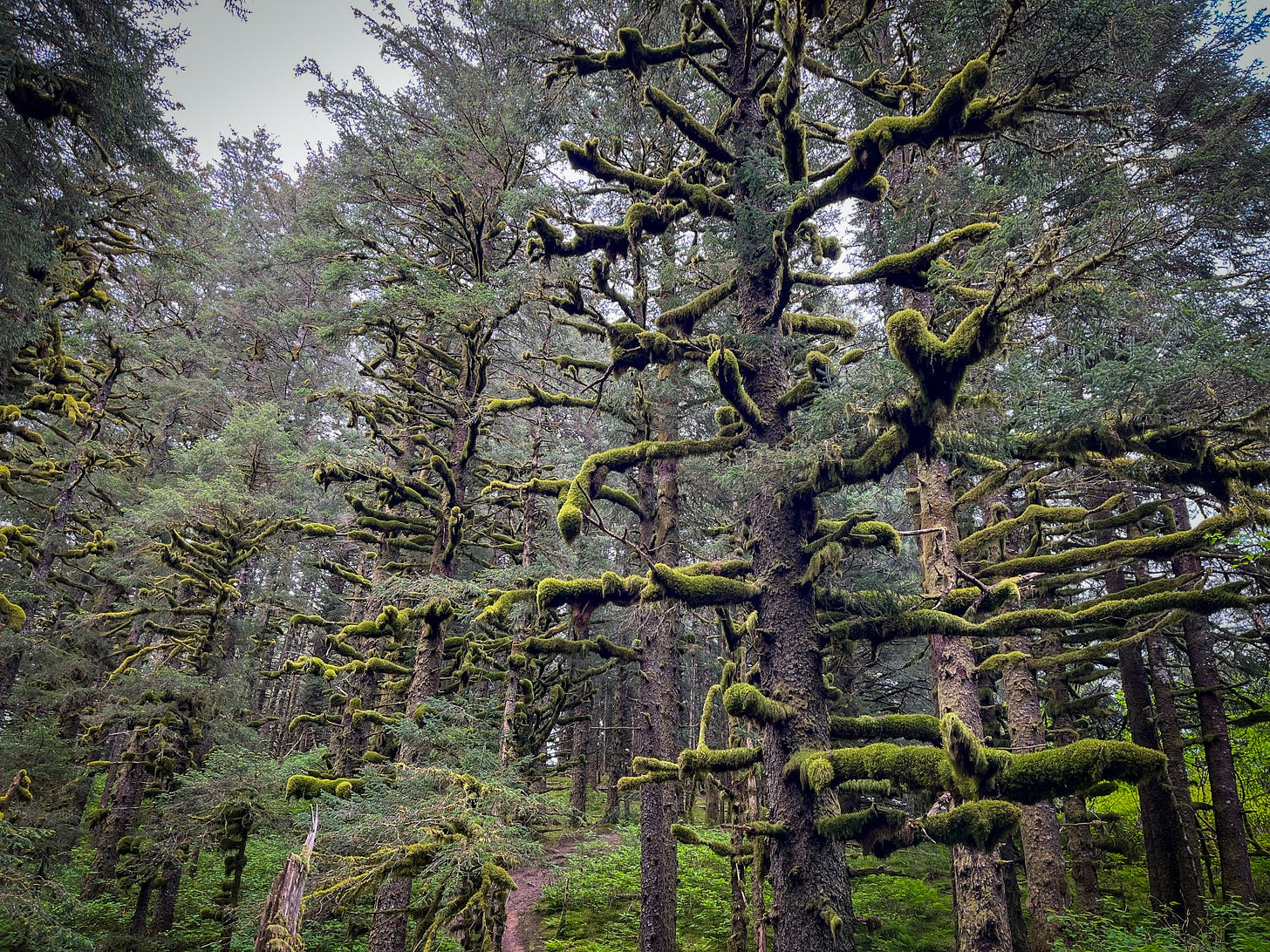
I headed into the forest just after arriving. I had just poked down the first bit of trail when I stopped dead. This moss was everywhere! Sure, I’d seen the photos before I arrived. Sure, my friend Tim had warned me. But suddenly I was so awe-struck I wanted to scream.
Sometimes loving moss is like being obsessed with Where’s Waldo. It can be so joyful to spot little guys out in the world. But this was walking into a forest full of Waldos. Waldos on every surface of everything in sight. Although in this case, I guess Waldo is played by Treebeard…
I spent the better part of an hour on the first hundred feet of trail. Just oohing and ahhing and photographing and staring at - all - the - moss.
Bear v Moss
Kodiak Island is named after a larger than average bear, a subspecies of grizzly called the Kodiak bear. A bear that is famous for being huge. So while being alone on the trail was good for not annoying a hiking partner by staying glued to the same spot in the forest for 45 minutes, it was less good for safety. My rental car came with bear spray and there are plenty of warnings everywhere to be loud and be aware when hiking.
So on the trail, I sang and talked, per bear protocol. I thought it would be hard to make noise for an entire day hike, but it turns out I spend a weird amount of time talking to moss anyway. Sadly (?), despite an estimated population of 3500, almost one bear per square mile, I didn’t see a single famed Kodiak bear.
This part of Kodiak Island is a dense Sitka spruce forest, one of the only of its kind. The temperate rainforest is characterized by thick continuous moss coverage. It gave the forest floor a shag carpet vibe.
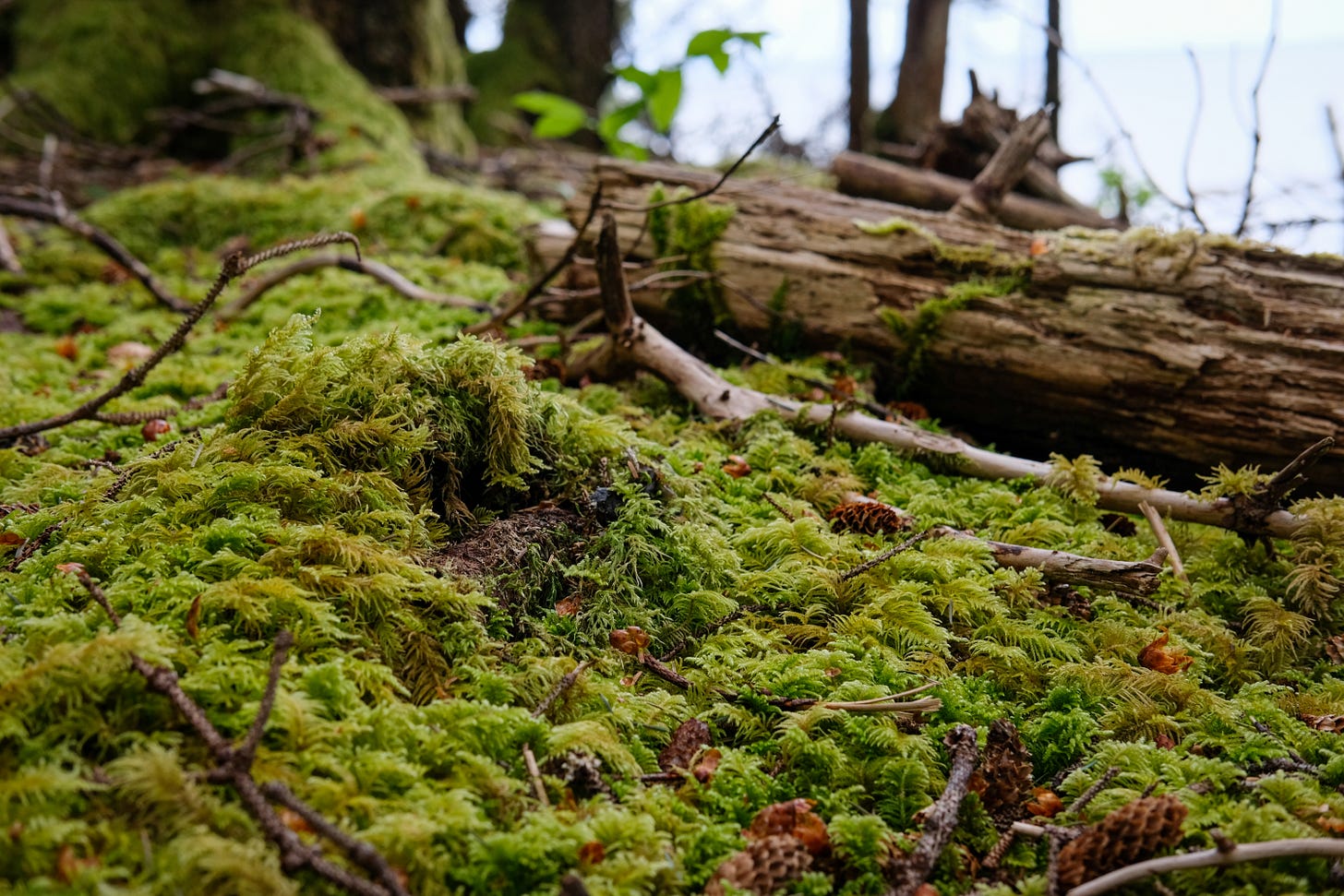
There are hundreds of species of moss in this island chain. Each type of moss has a very specific place it likes to live. Kodiak is home to the Alutiiq people, and they divided the mosses up into two groups: tree mosses and ground mosses. They used mosses extensively in daily life, including for baby diapers and home insulation.
Eternal sunshine of the spotless moss
Nowhere on this island is more than 15 miles from the ocean. Where the salt spray doesn’t get you (or even where it is does), the fog is there. This place is wet wet wet and staying thirsty. And moss is here for it. The moss needs the moisture to stay alive, but it also helps keep moisture alive as well. Mosses can protect soil from atmospheric climate variations by acting as a layer of insulation. It doesn’t heat up fast and it holds a lot of water. But how does this place stay so damp and so vibrant without succumbing to mold or destruction?
Same way you do actually. Hopefully. Microbes! Listen moss is fierce AF. I know you’ve been thinking it’s the cutie underdog (correct) but it’s also tough ok. Since they are so structurally simple, mosses lack physical protections against other plants, fungi and bacteria. Instead, moss produce all kinds of chemicals and bioactive compounds to fight off bacteria. In other words while they don’t look tough, they very much are. They may even prove to be a source for new types of antibacterial medicines in the future.
Cold fog summers make me feel rotten sometimes. If it’s cold and winter it makes sense to me, but if it’s Fogust in California then I need a therapist. I’ve fallen in love with seasonality. I’m weaker than moss for sure. But I love seeing happy moss survive whatever the season. I can’t help but admire the quiet strength it takes to exist where it does.
So many things in the world feel truly difficult right now. At a time when survival, or full stomachs, or clean water, no longer feels like something to take for granted. My soggy summer gripes are immaterial.
While I lack the antimicrobial fortitude to fully resist molding, I can be out here finding new ways to resist getting too bogged down.
Moss Mail
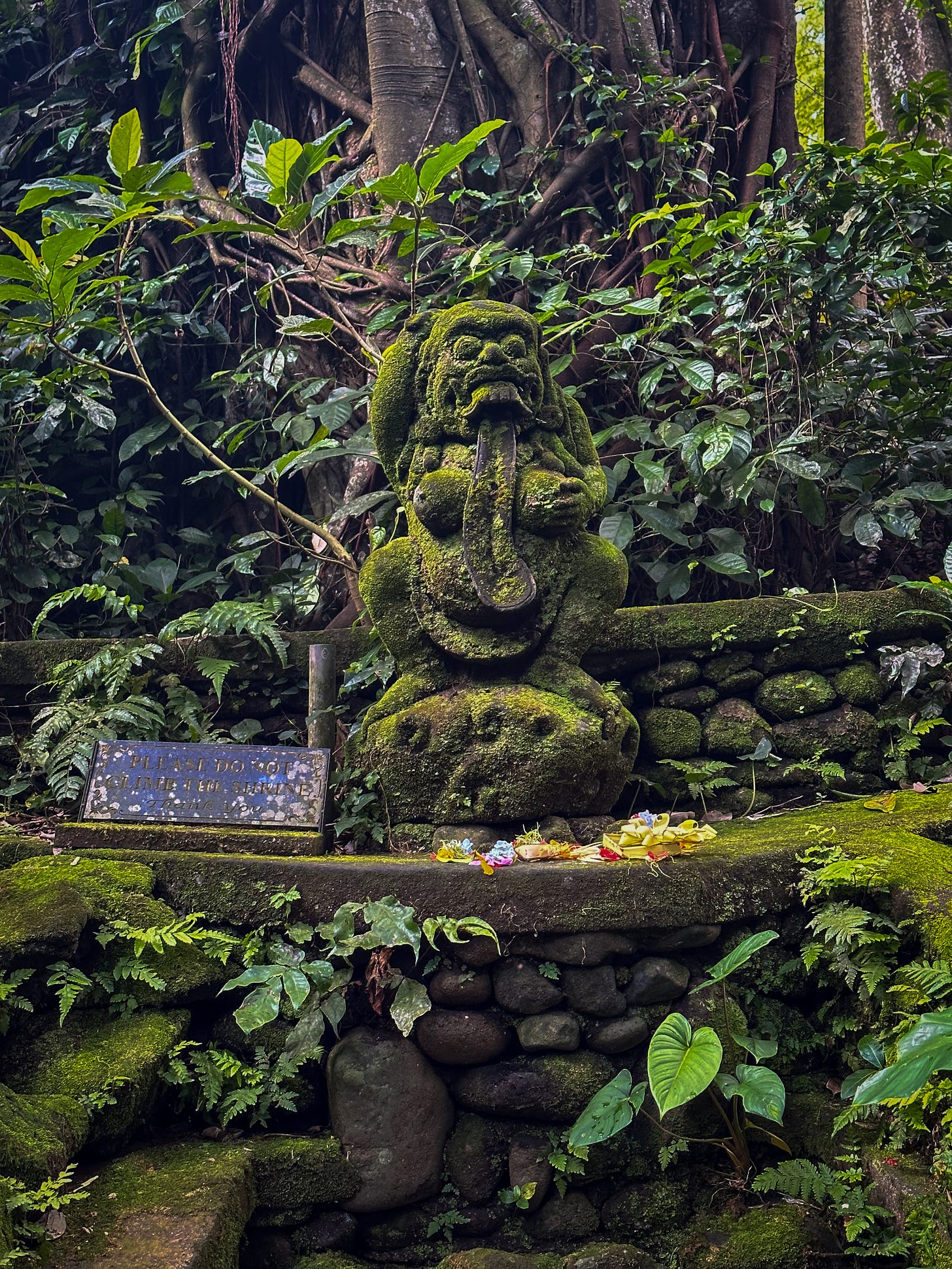
More moss goss:
Kodiak, Alaska’s Emerald Isle by Carol Sturgulewski
Rural and Native public media has been gutted, but it is a critical source of news for some communities in Alaska. Consider listening or donating to your local news stations or Native Public Media this week
Who Are We, a short doc about the Alutiiq people
Thanks to Tim Treuer, the Borealis Fellowship, the Alaska Tech Hub and the Cook Inlet Tribal Council
Kodiak is home to the Alutiiq people. Thanks to the Alutiiq museum for providing an eye-opening education about the people and art of Alaska.


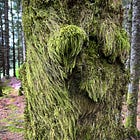
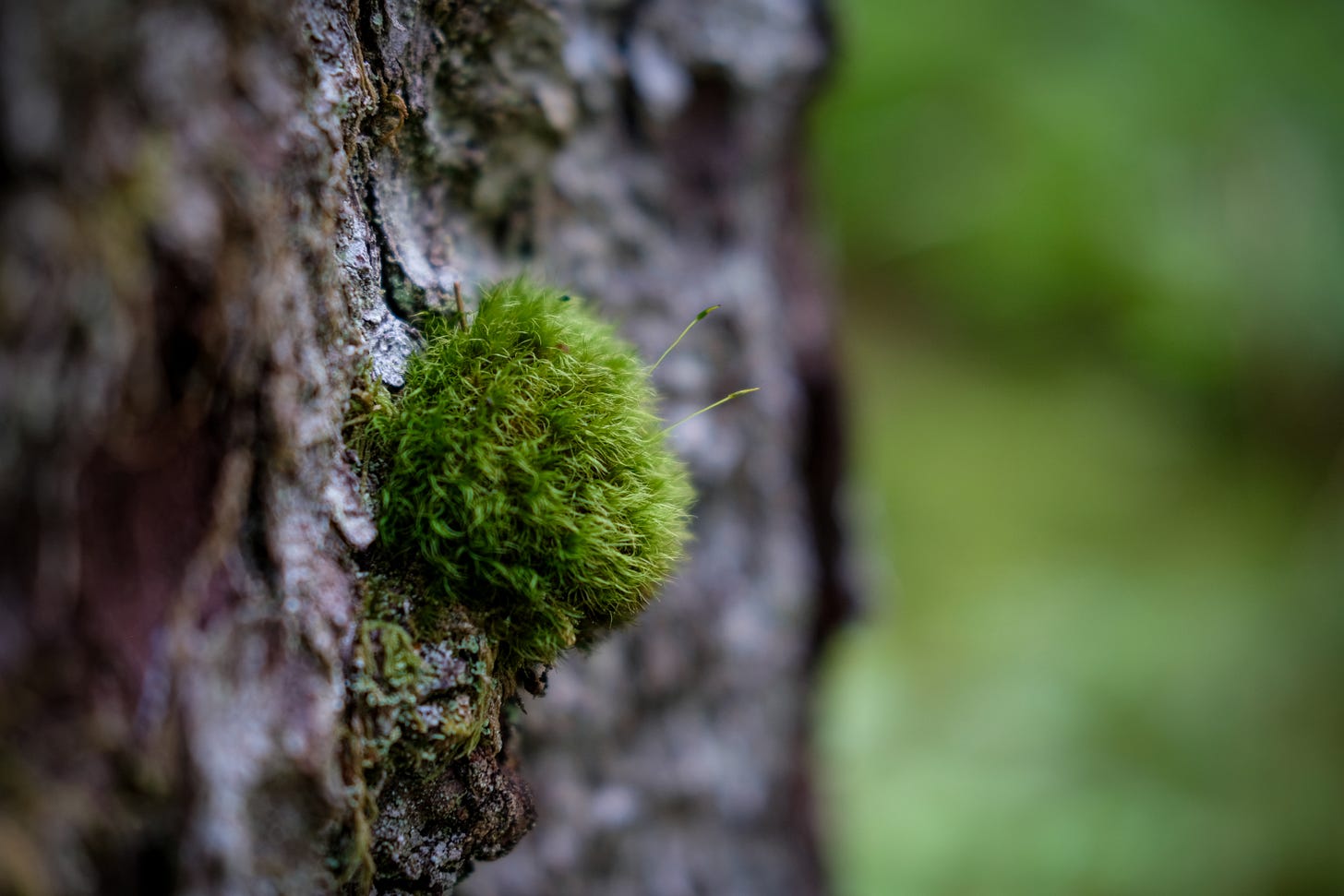
Kate, what a wonderful article. Certainly brings back memories. I worked one summer on Afognak Island on a timber survey. I'll have to dig out some pictures and scan them to share with you. Looks like you had a great time.